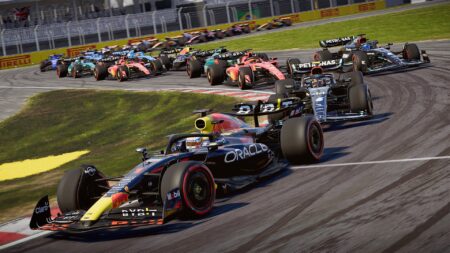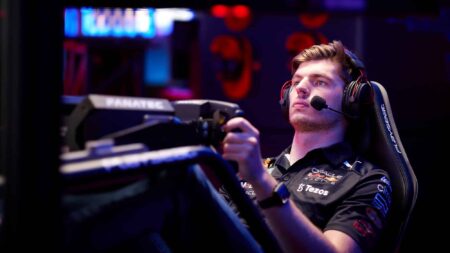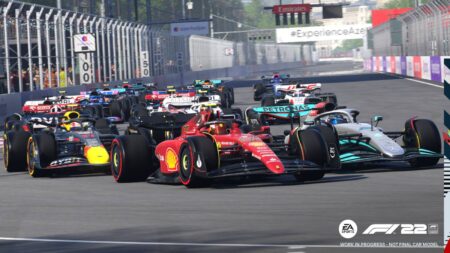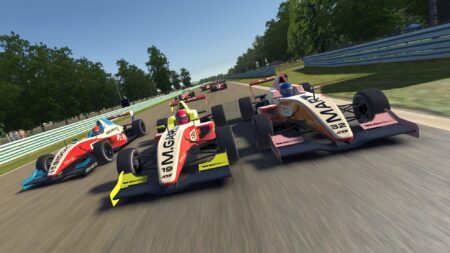
F1 23 review: racing rejuvenated or relapsed?
Our detailed review of the new F1 23 game including new features, new circuits and a brand new story mode
Gran Turismo Sport’s mission is to turn what was once a ‘Real Driving Simulator’ into a real racing simulator – but has it succeeded?
Polyphony Digital’s 2017 release, a Playstation exclusive, veers away from the franchise’s roots, offering a noticeably pared down showroom of 140 cars rather than GT6’s burgeoning list of more than 700 machines. Though it may seem like an unwanted change to a series that has historically focused on collecting cars, GT Sport’s newly found emphasis on esports might feel refreshing to some.
Distilling its offering has allowed GT Sport to veer into esports territory, a growing market, with Formula 1 having launched its own competition this year and platforms such as iRacing allowing sim-racers to progress into real competitions.
Instead of oddities such as the Lunar Rover, 1886 Mercedes-Benz Motor Carriage and the smattering of Japanese Kei cars found in previous instalments, GT Sport’s handful of stock machines such as the Ford Mustang and Toyota GT86 are joined by race-bred variants of themselves, along with off-road models of certain cars such as the Subaru WRX and concept models developed in conjunction with manufacturers such as Citroën and Bugatti.
That 160-car figure looks less impressive, given that cars such as the 2017 Ford Mustang have been transformed into sports car and rally variants, which prop up the car list. Karts aside, a lack of open wheel cars further disappoints.
The models are exquisitely detailed and they complement the equally stunning environments, and now their engine sounds pack an appropriate punch as well, with turbo waste-gates whining and exhausts popping with aplomb.
This stripped-down approach does make the introduction video hard to swallow, with old footage of Mercedes 300 SLR on the way to a Le Mans 24 Hours victory, or an Audi Quattro splitting banks of spectators, tearing through a rally stage.
The reality of GT Sport is more sterile, and sterner than what it advertises on starting the game. The sparse list of circuits, with 11 fictional environments, and six real-world locations, grates far more than the meagre, if concise, car list.
What should be mainstays of any racing simulator – the Nürburgring, Suzuka and Brands Hatch – are thankfully included, but the omission of Spa-Francorchamps, Laguna Seca and Indianapolis, grates from the off. It is a glaring compromise, particularly after Project CARS 2 managed to populate its own world with environments familiar to the clubman racer, and the armchair F1 punter alike.
The slim single-player portion of the game can be completely bypassed if you jump into the online section straight off the bat, but the hand-holding tone of the single-player ‘driving school’ mode carries over as GT Sport forces the player to watch two training videos – developed in conjunction with the FIA, which has certified the Gran Turismo online championship – to gain an online ‘licence’.
This pair of three-minute videos is ham-fisted in its explanation of racecraft. The first, which aims to explain “The core idea” behind sportsmanship, includes dialogue such as “Sportsmanship: the attitude you must have when partaking in a sport,” while the second video explains “improper driving techniques” with such choice phrases as “The worst is when you become a missile.”
Unhelpfully, it concludes: “Just be careful,” as GT Sport clumsily throws the player into a world of strict online competition.
Races are held at set times but it’s easy to jump into an event, set a qualifying time and race. To curb the first corner fracas that plague many an online racing session, GT Sport has implemented a ‘sportsmanship rating’, which could mean that you’re pitted against other aggressive drivers or altogether kicked from a session. Furthermore, players are ‘ghosted’, or made invisible if they spin, slow down or overshoot a corner eliminating the possibility of any race-changing crashes. The caveat to this approach is that GT Sport’s penalty system feels vague and overly punishing at times. At other times, its automated penalty system doesn’t seem punishing enough when you’ve been punted off track through a corner. Without a human touch, this system shows its flaws, but as witnessed at the United States Grand Prix, post-race penalties can remain divisive, even with a team of stewards dictating the process.
These deviations from GT Sport’s previous iterations cease when it comes to the driving itself, which is as deep and intuitive as its predecessors’. Force feedback is a bit lacking through our Thrustmaster wheel, however, and it’s sometimes hard to tell when the car is completely at the limit mid-corner. With a multitude of assists, which can be changed on the fly depending on the car, and a plethora of set-up options, even hot-lapping is a rewarding and enjoyable experience.
The lack of content in GT Sport will surely hurt its longevity as a sim-racing platform, and its jarring inclusion of fictional cars and tracks is puzzling. What remains to be seen is just how long its esports drive will last, and whether the ‘sportsmanship’ system will turn a community of console gamers into serious racers, or turn them off altogether.

Our detailed review of the new F1 23 game including new features, new circuits and a brand new story mode

Max Verstappen quit the 2023 Virtual Le Mans 24 Hours and labelled it a "clown show" after connection issues, but many say that technical issues are simply part of sim racing

A new era of F1 cars, complete challenges in supercars and VR compatible are key features for this year's game and more

Esports has long been viewed as insignificant but 'old views' need to change according to some drivers